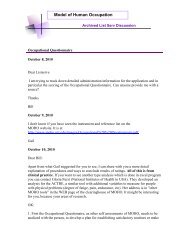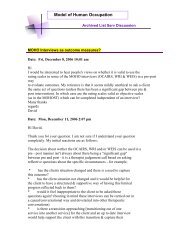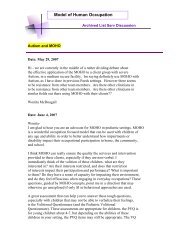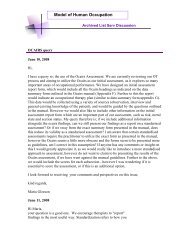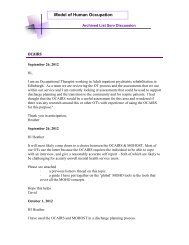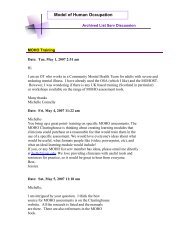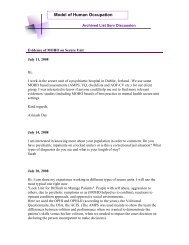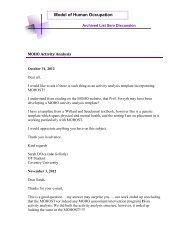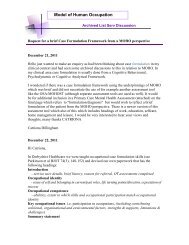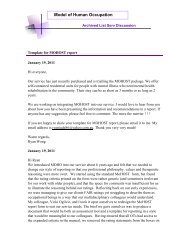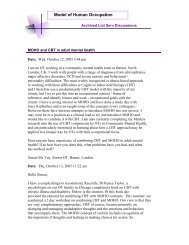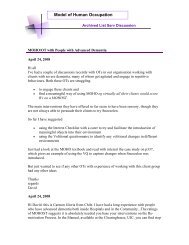Model of Human Occupation
Model of Human Occupation
Model of Human Occupation
Create successful ePaper yourself
Turn your PDF publications into a flip-book with our unique Google optimized e-Paper software.
assessment that serves as a screening tool, as well as a tool tomeasure progress or change over time. A case study within the textprovides an example <strong>of</strong> the use <strong>of</strong> the MOHOST in documenting theprogress <strong>of</strong> a client.I hope this is helpful!Annie PloszajResearch AssistantMOHO ClearinghouseDate: Wed, December 7, 2005 7:02 pmThe MOHOST is so named (screening tool) because it's original use was in acontext where there needed to be a quick early assessment and since thistool <strong>of</strong>ten served as a "first screen" to identify areas for furtherassessment as well as identifying strengths and weaknesses in acomprehensive way to guide treatment planning.That said, there are many reasons why the MOHOST CAN be used as an outcomestool.Like any outcomes tool, where the aim is to show improvement due tointervention, one must administer the tool at least twice--at baseline andafter a period <strong>of</strong> intervention, in order to measure change over time. A tooladministered only at the end <strong>of</strong> therapy is really not an outcome measure,because there is nothing to compare it to in order to make inferences aboutthe outcome.When choosing an outcome tool for repeated use in clinical settings thereare two main considerations.The first is that the tool should have good psychometric properties asevidenced through research (i.e., that it is reliable, valid and sensitive).While the MOHOST is in the mid stages <strong>of</strong> development, the evidence thus farsuggests this instrument has excellent measurement properties; A first studyprovided evidence that it is reliable and valid. Another study, that we justcompleted found that each <strong>of</strong> the factors within the MOHOST (volition,habituation, motor skills, process skills, communication interaction skillsand environment, hold up as distinct factors (in a confirmatory factoranalysis) and show statistically significant differences across groups <strong>of</strong>clients. This evidence supports the value <strong>of</strong> clinical interpretations thatexamine each section <strong>of</strong> the MOHOST and it also suggests that the MOHOST candistinguish between clients with different patterns <strong>of</strong> strengths and weaknesses. Alongwith the studies mentioned above, we have also evidence <strong>of</strong>good concurrent validity.



